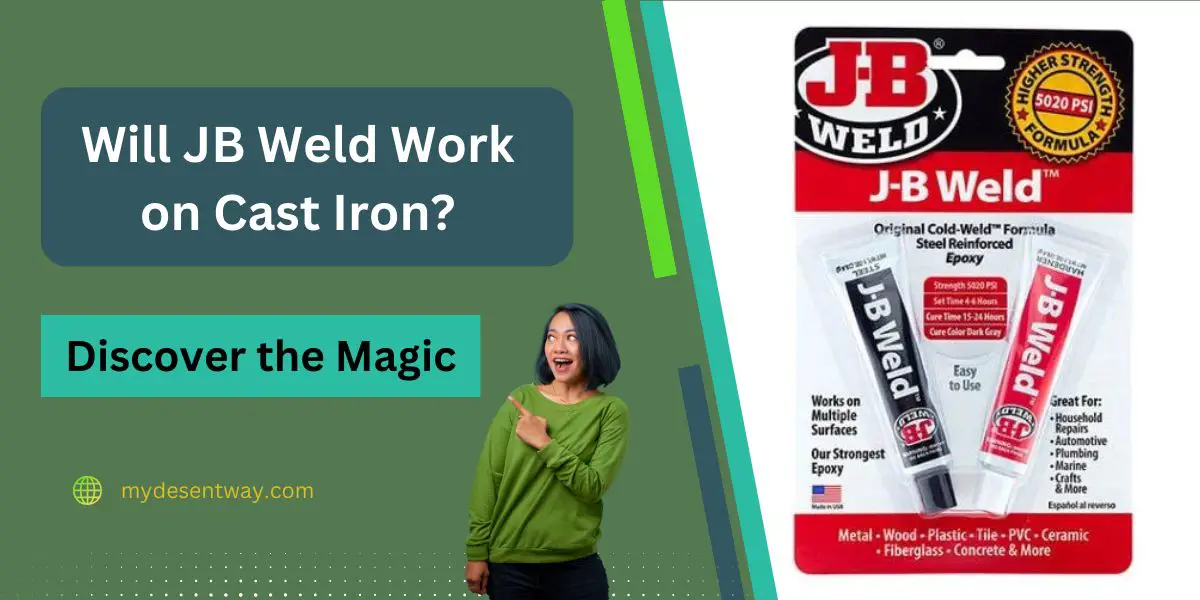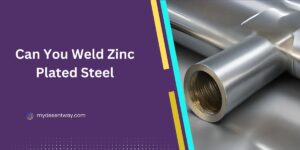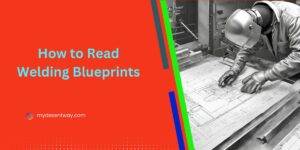Table of Contents
- 1. Will JB Weld Work on Cast Iron?
- 2. Challenges with Cast Iron Repairs
- 3. Factors Influencing Effectiveness
- 4. Step-by-Step Guide to Using JB Weld on Cast Iron
- 5. Real-life Success Stories
- 6. Expert Tips for Optimal Results
- 7. Comparing JB Weld with Alternatives
- 8. DIY vs. Professional Repairs
- 9. Maintenance and Longevity
- Conclusion
Cast iron, a sturdy and durable material, is a favorite in various applications, from cookware to industrial components. However, over time, it may develop cracks or breaks, prompting the need for effective repairs. Enter JB Weld, a versatile epoxy adhesive known for its bonding prowess. In this article, we delve into the question on everyone’s mind: will JB Weld work on cast iron?
1. Will JB Weld Work on Cast Iron?
Yes, JB Weld is a reliable solution for repairing cast iron. Its versatile epoxy composition, coupled with proper surface preparation and application techniques, makes it a practical choice for DIY enthusiasts and professionals alike.
Numerous success stories and testimonials attest to JB Weld’s ability to restore cast iron items to their former glory. So, if you’re wondering whether JB Weld will work on cast iron, the answer is a resounding yes.
2. Challenges with Cast Iron Repairs
Common Issues Faced
Cast iron repairs often pose challenges due to the material’s brittleness and the nature of the stress it undergoes. Traditional methods may fall short, leading to the exploration of alternatives like JB Weld.
Traditional Methods vs. JB Weld
A comparison between conventional cast iron repair techniques and JB Weld reveals the epoxy’s unique ability to provide a reliable solution where others might falter.
3. Factors Influencing Effectiveness
Surface Preparation
The success of using JB Weld on cast iron starts with meticulous surface preparation. Cleaning the area thoroughly ensures optimal adhesion.
Application Technique
Applying JB Weld requires precision. Understanding the correct technique can make the difference between a lasting repair and a temporary fix.
4. Step-by-Step Guide to Using JB Weld on Cast Iron
Clean the Surface
Begin by cleaning the damaged area with a suitable solvent to remove any contaminants.
Mix the JB Weld
Follow the manufacturer’s instructions for mixing the resin and hardener in equal proportions.
Apply the Epoxy
Use a spatula or applicator to spread the JB Weld evenly over the damaged portion, ensuring complete coverage.
Allow Curing Time
Patience is key. Allow the epoxy to cure according to the recommended time frame for optimal results.
5. Real-life Success Stories
Examples of Successful Cast Iron Repairs
People have used JB Weld to rescue various cast iron items, turning them from broken to good as new. Here are a few real-life success stories that showcase the effectiveness of JB Weld in cast iron repairs:
- Cracked Cookware: Sarah had a cherished cast iron skillet with a crack that seemed beyond repair. After applying JB Weld and following the instructions, she found her skillet fully functional again, cooking up delicious meals without any issues.
- Antique Restoration: Mark, an antique enthusiast, used JB Weld to restore a valuable cast iron artifact. The epoxy not only repaired the damage but also preserved the historical integrity of the item, making it display-worthy once more.
- Industrial Equipment Fix: In an industrial setting, where machinery is subjected to heavy use, JB Weld played a crucial role. John, a maintenance worker, successfully used JB Weld to fix a critical component of a machine, avoiding costly replacements.
Testimonials from Users
Users from various backgrounds and experiences have shared their satisfaction with JB Weld’s performance on cast iron. Here are some testimonials that highlight the positive experiences of individuals who trusted JB Weld for their repairs:
- Sandra, DIY Enthusiast: I was skeptical at first, but JB Weld exceeded my expectations. Fixed a cracked cast iron pot, and it’s as sturdy as ever. Definitely a game-changer for DIY repairs!”
- Mike, Automotive Repair: JB Weld saved me from a hefty repair bill. I used it on a cracked cast iron manifold, and it’s held up perfectly under high temperatures. I highly recommend it to anyone facing similar issues.
- Emily, Homeowner: Our antique cast iron gate had seen better days. JB Weld not only fixed the cracks but also provided a seamless finish. It’s like the damage never happened. Super impressed!
These examples and testimonials illustrate the versatility and reliability of JB Weld in tackling cast iron repairs, making it a trusted choice for a diverse range of users.
6. Expert Tips for Optimal Results
Dos and Don’ts
When using JB Weld on cast iron, it’s essential to follow certain dos and don’ts to ensure a successful and lasting repair. Let’s break down the key points:
Dos:
- Read the Instructions: Always start by carefully reading the instructions provided by JB Weld. Following the manufacturer’s guidelines is crucial for the best results.
- Surface Cleaning: Thoroughly clean the damaged area before applying JB Weld. Remove any grease, dirt, or rust using an appropriate solvent to ensure a strong bond.
- Equal Mixing: JB Weld consists of a resin and a hardener. Measure and mix them in equal parts for the epoxy to work effectively. Use a clean tool for mixing.
- Precision Application: Apply the epoxy with precision, ensuring complete coverage over the damaged section. Use a spatula or applicator to achieve a smooth and even finish.
- Allow Adequate Curing Time: Patience pays off. Let JB Weld cure for the recommended time to ensure the bond becomes strong and durable. This typically takes around 24 hours.
- Sand and Paint as Needed: Once the JB Weld has cured, you can sand it down for a smoother finish. Painting is also an option to match the repaired area with the rest.
Don’ts:
- Avoid Excess Epoxy: Applying too much JB Weld won’t make the bond stronger. Use the recommended amount to avoid messy and uneven repairs.
- Skipping Surface Preparation: Neglecting proper cleaning of the cast iron surface can result in a weak bond. Take the time to clean and prepare the area before applying JB Weld.
- Rushing the Curing Process: Resist the temptation to rush the curing process. Allow JB Weld to cure fully for the specified time to ensure a robust repair.
- Ignoring Safety Precautions: JB Weld contains chemicals, so follow the safety precautions mentioned in the instructions. Use protective gear such as gloves and work in a well-ventilated area.
Precautions to Take
While JB Weld is a powerful adhesive, taking certain precautions during and after application is essential to ensure safety and optimal results:
- Protective Gear: Wear gloves and, if necessary, a mask while handling JB Weld. This helps in preventing skin contact and inhalation of fumes.
- Ventilation: Work in a well-ventilated area to minimize exposure to fumes. If possible, use a mask or respirator for additional protection.
- Avoid Direct Skin Contact: In case of skin contact, wash the affected area immediately with soap and water. If irritation persists, seek medical attention.
- Eye Protection: Use safety goggles or glasses to protect your eyes from accidental splashes or contact with JB Weld.
- Dispose of Waste Properly: Dispose of used containers, applicators, and any waste materials according to local regulations. Do not pour excess epoxy down the drain.
- Store in a Cool Place: Store JB Weld in a cool and dry place, away from direct sunlight. Proper storage ensures the longevity of the product.
By adhering to these dos and don’ts, along with taking necessary precautions, you enhance the likelihood of a successful and safe JB Weld application on cast iron.
7. Comparing JB Weld with Alternatives
When considering repairing cast iron, it’s essential to explore other adhesives and fillers available in the market. Let’s weigh the pros and cons of JB Weld against some common alternatives:
A. Other Adhesives and Fillers
1. Super Glue:
1. Pros:
- Quick bonding time.
- Easy to apply.
2. Cons:
- Not suitable for heavy-duty repairs.
- It may not withstand high temperatures.
2. Epoxy Putty:
1. Pros:
- Malleable and easy to shape.
- Suitable for irregular surfaces.
2. Cons:
- Longer curing time.
- It may require additional support during curing.
3. Metal Epoxy:
1. Pros:
- Specifically formulated for metal bonding.
- Resistant to heat and chemicals.
2. Cons:
- Limited flexibility.
- It can be more expensive.
B. Pros and Cons of JB Weld
Now, let’s weigh the advantages and disadvantages of using JB Weld for cast iron repairs:
Pros:
- Versatility: JB Weld works well on various materials, making it suitable for a wide range of applications beyond cast iron.
- Strong Bond: When used correctly, JB Weld creates a robust bond that can withstand considerable stress, ensuring a reliable repair.
- Temperature Resistance: JB Weld can endure high temperatures, making it suitable for applications where cast iron may be exposed to heat.
- Ease of Use: The two-part epoxy system is user-friendly, requiring simple mixing and application. It’s accessible to both DIY enthusiasts and professionals.
- Cost-Effective: Compared to some alternatives and traditional repair methods, JB Weld often provides a cost-effective solution.
- No Distortion: Unlike welding, JB Weld doesn’t cause distortion or discoloration in the cast iron, maintaining the original appearance.
- Minimal Equipment Needed: No specialized equipment like welding machines is necessary, making JB Weld a convenient option for many users.
Cons:
- Curing Time: JB Weld requires adequate curing time, usually around 24 hours. This may be a downside for those seeking quick fixes.
- Surface Preparation: Successful application depends on thorough surface preparation. Neglecting this step can result in a weaker bond.
- Not for Structural Repairs: While JB Weld is excellent for general repairs, it may not be suitable for critical structural components.
- Limited Flexibility: JB Weld can be brittle when cured, which may affect its performance in applications where flexibility is crucial.
- Not Reversible: Once applied, JB Weld is permanent. Unlike some other adhesives, you can’t quickly reverse the process.
- Odor and Fumes: JB Weld emits a noticeable odor during application, requiring proper ventilation. Some users may find the smell unpleasant.
8. DIY vs. Professional Repairs
When to Choose Each Option
Deciding between a do-it-yourself (DIY) approach and seeking professional help for your cast iron repairs depends on several factors. Here’s a guide on when to choose each option:
DIY Repairs:
- Minor Damage: If the cast iron damage is minor, such as small cracks or chips, and you have some experience with DIY projects, tackling it yourself can be a cost-effective solution.
- Comfort with JB Weld: DIY repairs are suitable when you’re comfortable using products like JB Weld. Following instructions and having patience during the curing process are key to success.
- Budget Constraints: If budget constraints play a significant role, opting for a DIY repair with JB Weld can save money compared to hiring a professional.
Professional Repairs:
- Structural Issues: For significant structural damage to cast iron items, especially those with critical functions, seeking professional assistance ensures a thorough and reliable repair.
- Historical or Valuable Items: If the cast iron item holds historical or sentimental value, or if it’s a valuable antique, professionals can provide meticulous repairs without compromising its integrity.
- Complexity of Repair: When the repair involves intricate details, welding, or requires specialized equipment, professionals with expertise in cast iron restoration are better equipped to handle the complexity.
Cost Considerations
Understanding the cost implications of both DIY and professional cast iron repairs is crucial in making an informed decision:
DIY Costs:
- Material Costs: DIY repairs with JB Weld generally involve minimal material costs. The epoxy is affordable, and basic tools for cleaning and application are readily available.
- Time Investment: While DIY repairs save on labor costs, consider the value of your time. JB Weld requires curing time, so factor in the duration needed for the repair process.
Professional Costs:
- Labor and Expertise: Professional repairs come with labor costs, reflecting the expertise and skill required for quality cast iron restoration.
- Additional Materials: Professionals may use specialized materials or equipment, contributing to overall costs. This is particularly true for intricate repairs or antique restoration.
- Guarantees and Warranties: Some professional services provide guarantees on their work, offering peace of mind regarding the longevity of the repair.
9. Maintenance and Longevity
Ensuring Lasting Results
Tips on maintaining the repaired cast iron item to ensure longevity and sustained functionality.
Periodic Checks and Care
Regular inspections and care routines contribute to the extended life of the repaired cast iron.
Conclusion
In conclusion, JB Weld has proven itself as a reliable solution for cast iron repairs. Its versatility, coupled with proper application techniques, makes it a go-to choice for DIY enthusiasts and professionals alike. The next time you wonder, “Will JB Weld work on cast iron?” remember the success stories and the steps outlined here for optimal results.
FAQs
How long does JB Weld take to cure on cast iron?
B Weld typically takes about 24 hours to cure on cast iron, but curing time may vary based on environmental factors.
Can JB Weld withstand high temperatures on cast iron?
Yes, JB Weld can withstand high temperatures, making it suitable for applications where cast iron may be exposed to heat.
Is JB Weld suitable for outdoor cast iron applications?
JB Weld is suitable for outdoor use on cast iron, providing a durable and weather-resistant repair solution.
Are there any specific precautions when using JB Weld on antique cast iron?
When working with antique cast iron, take extra care during surface preparation to preserve the item’s integrity and historical value.








